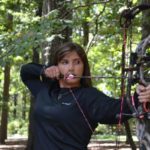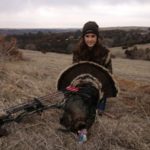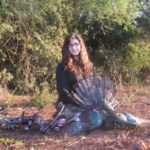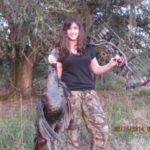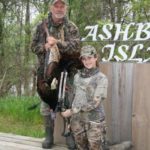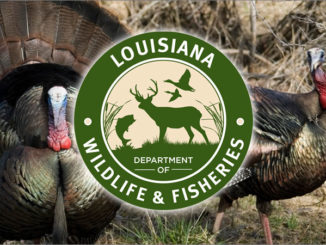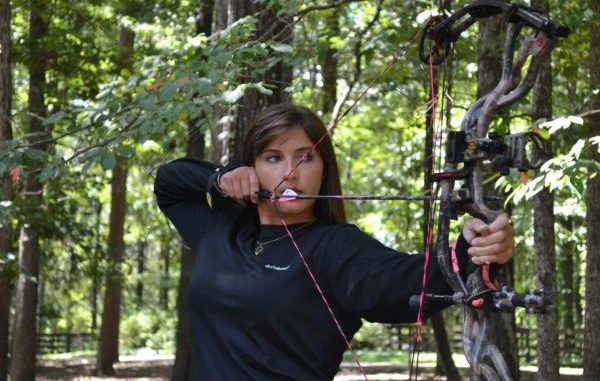
Rachel Barr set out to complete a wild turkey world slam before graduating high school — with archery equipment. Here’s how she did it and how you can follow in her footsteps.
You’re a high-school senior, a female and you have something you want to get done before graduation.
Make cheerleader?
Win a spot on a varsity team?
For 18-year-old Rachel Barr, the cheerleader thing had already been done during her freshman and sophomore years at West Monroe High School.
Ditto for having made the varsity. She was a member of the school’s swim team.
So, what else could the teenager have on her bucket list before graduating high school?
How about completing a wild turkey grand slam before finishing high school? To add a difficulty factor to her quest, how about getting all six subspecies of birds with archery equipment?
While few hunters would set their sights quite that high, Barr became only the second female to complete an archery world slam, according to the National Wild Turkey Federation.
Barr’s fascination with bow hunting began at an early age.
“When I was little, our neighbor at our hunting camp used to practice shooting his bow. I was curious so I would go stand by him and watch,” the now freshman pre-vet LSU student explained. “He’d let me run and retrieve his arrows. Later when I got old enough to hunt, my dad bought me a rifle, but I never took an animal with it. I didn’t like the noise, the smell, the kick that broke a pair of my glasses once.
“I told my dad I wanted to hunt with a bow, so he sold my rifle and bought me a bow. I have been hooked ever since.”
Her world slam quest began at 14, when Barr downed her first gobbler — a mature Eastern — with her bow in March 2011 while hunting with her father Dr. Larry Barr at Ashbrook Island Land hunting club on the Louisiana/Mississippi border.
“Getting that first one lit a fire under me,” the younger Barr said. “I went to the NWTF website and began researching what type of slams were possible.
“When I saw the world slam, which meant I’d have to do a lot of traveling — some of which would be out of the country — to have a chance at all six sub-species, I told my dad this is what I wanted to do. He agreed that if this was really what I wanted to do, he’d help me research and line up hunts to make it happen.”
After arrowing the Eastern longbeard in 2011, it was two years before her mission picked up steam.
Barr went for an additional four sub-species in 2013, beginning March 28 by killing a Merriam’s gobbler in Nebraska.
Then it was on to Florida to try for an Osceola.
“My time was very limited for my Florida hunt, but I had the chance at a bird and, unfortunately, I missed,” Barr said. “I made plans to return in 2014 for the Osceola, but in order to complete my plan of getting the world slam before graduating from high school in May 2014, I knew I had lots to do.”
Next on her list was the strikingly beautiful Gould’s turkey, but it was necessary to travel to Mexico.
“On the first afternoon there — April 19, 2013 — … I was able to complete the deal on a mature Gould’s gobbler,” Barr said. “Leaving Mexico, my dad and I took a quick trip to Kansas to try for a Rio Grande gobbler.
“Bad weather spoiled my chance, so the season ended with three of the six — Eastern, Merriam’s and Gould’s — on the books.”
That meant she would have to kill the other three during the 2014 to finish the slam before her graduation.
The 2014 season started with well, when Barr stuck a beautiful Oscellated gobbler in Campeche, Mexico, despite a severe eye infection that forced the young hunter to wear eye glasses instead of her normal contacts.
“There were plenty of turkeys there and I got a couple of chances, but my inability to focus because of the infection resulted in two missed birds,” she explained. “However, I was able to get a third chance and connected with an exotic Oscellated gobbler.”
Next it was back to Florida to give the Osceola subspecies another try.
Her dad drove to St. Cloud, Fla., to scout, and then Rachel flew in March 14 to hunt the following morning.
“We were hunting a roost area early that morning without any luck. After lunch, we were back in the blind. Late that afternoon, we called in two gobblers,” Barr said. “I took a shot at one of the birds and missed.
“Fortunately, the second bird stayed around long enough for me to get a shot at him. This time, I was on the money, and now I had an Osceola to add to my list.”
That left only one more sub-species to complete Barr’s world slam.
For most hunters, the Rio Grande is the easiest to bag because their numbers are high in areas where they live. However, this was not the case for Barr.
She and her father drove to Texas’ Bandera County to hunt a ranch for what turned out to be a failed attempt at the subspecies.
“The weather was threatening and the turkeys were spooked, and I was not able to get a good shot at a Rio,” Barr said. “I was not very happy to have to head back home.”
The next weekend, however, the Barrs were back at the ranch.
Her hunt didn’t start out well.
“April 11, we were back at it and didn’t hear a single gobble,” Rachal Barr said. “We spotted a few birds, but everything was really quiet.”
After lunch, she was back at it.
“ We spotted a group of jakes and gobblers, and were finally able to call one of the longbeards in and I made the shot,” Barr said. “When that bird hit the ground, the tears came in relief that the world slam quest was done.”
Now that Rachel Barr’s name is officially in the books for accomplished something few others have, she reflected on what she believes her success depended on.
“My dad has been hunting all over the world, so he knows what it takes to do something like this,” she said. “He was very supportive of me and was by my side every step of the way.
“My mom was either dating my dad or married to him while he was hunting everywhere, and she went with him to most places so she knew what it would be like. Both my parents were extremely supportive of me, and I could not have done this without them.”
Adding even more class to Barr’s incredible feat is the fact that all six of the gobblers she arrowed were mature birds — there was not a jake among them.
